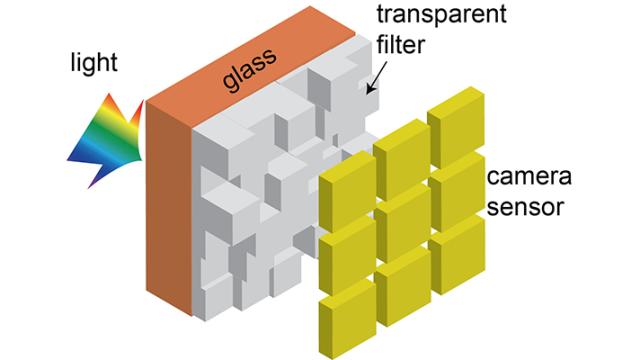Good low-light photography is one of the toughest nuts to crack: to get good pictures in the dark normally requires some combination of fast lenses and big, expensive sensors. But tweaking one filter that lives inside the camera could help big time.
Most cameras have a Bayer filter, which sits in front of the camera’s sensor and helps interpret colour. It’s what lets most cameras output a colour image, rather than just grayscale, but it also cuts down the amount of light that gets through to the sensor, by about 50 per cent.
So, a filter that could do the same job while not reducing the light would be a massive deal, letting you take photos at night without blurriness or noise. That’s what Rajesh Menon, a professor from the University of Utah, is proposing in a paper.
He has designed a new type of filter, which is just a micron thick. Rather than selectively blocking some light (how a Bayer filter operates), it instead bends light to create colour patters. Those patterns are read by software, which interprets the code and colourises the image.
Not only does it let far more light through, but it also picks up far more colours: a Bayer filter is restricted to red, blue and green, while Menon’s solution can detect 25 different colours. Of course, there’s a long way to go from a prototype filter to an actual product, but Menon’s confident that in three years, you’ll be using his filters to take selfies in darker places than ever.
